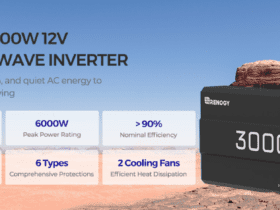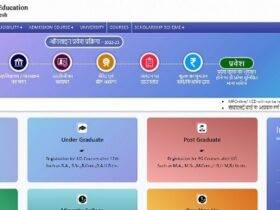Are you looking for a reliable and efficiEnt way to manage your Amazon Web Services (AWS) infrastructure? Look no further than externals-0.us-east-1.elb.amazonaws.com – the Elastic Load Balancing service that can help you distribute traffic across multiple resources to ensure high availability and scalability. But what exactly is ELB, how does it work, and why should you care? In this blog post, we’ll explore all these questions and more so that you can make the most of this powerful tool in your AWS arsenal!
Introduction to externals-0.us-east-1.elb.amazonaws.com
elb.amazonaws.com is Amazon’s Elastic Load Balancer service. externals-0.us-east-1.elb.amazonaws.com allows you to load balance your incoming traffic across multiple Amazon EC2 instances. This can help improve the availability and performance of your website or application.
To use elb.amazonaws.com, you will first need to create an Amazon ELB load balancer. You can do this via the AWS Management Console, Command Line Interface, or Software Development Kit (SDK). Once you have created your load balancer, you will need to configure it with the desired settings. This includes specifying the protocols and ports that your load balancer will use, as well as the Amazon EC2 instances that it will route traffic to.
Once your load balancer is up and running, you can begin routing traffic to it. This can be done using either an Amazon Route 53 DNS record or a CNAME record pointing to your load balancer’s DNS name. You can also configure your web server to send all traffic to your load balancer’s IP address instead of directly to your EC2 instances.
If you are using Amazon EC2 behind an Amazon ELB load balancer, there are a few things that you need to know in order to get the most out of this service. First, all requests from clients will appear to come from the IP address of the load balancer itself. This means that any logging or monitoring that you have set up for your
What is Externals-0.us-east-1.elb.amazonaws.com?
Externals-0.us-east-1.elb.amazonaws.com is an Amazon Web Services (AWS) Elastic Load Balancer (ELB). It is a regionalized DNS name that resolves to the IP address of the ELB in the us-east-1 region. The ELB distributes traffic across a group of EC2 instances in that region. Externals-0.us-east-1.elb.amazonaws.com is used by AWS customers who want to load balance traffic to their web applications hosted in the us-east-1 region.
Overview of AWS Services and Features Related to externals-0.us-east-1.elb.amazonaws.com
AWS offers a variety of services and features related to elb.amazonaws.com, including:
– Amazon Elastic Load Balancing (ELB): ELB automatically distributes incoming application traffic across multiple Amazon EC2 instances. It enables you to achieve greater levels of fault tolerance in your applications, seamlessly providing the required amount of load balancing capacity needed to route traffic to your EC2 instances.
– Amazon Simple Notification Service (SNS): SNS is a fully managed push notification service that makes it easy to send messages to large numbers of subscribers. With SNS, you can send notifications directly to users or systems, using topics and subscriptions.
– Amazon CloudWatch: CloudWatch monitors your AWS resources and applications in real time, providing you with valuable metrics and insights into how your systems are performing. With CloudWatch, you can set alarms and take action when certain thresholds are met, ensuring that your infrastructure is always running as efficiently as possible.
Step-by-Step Guide for Setting up an externals-0.us-east-1.elb.amazonaws.com Domain
1. If you don’t have a domain registered with Amazon Route 53, do that first. You can use any registrar to register your domain; Amazon Route 53 is just the registrar that AWS uses.
2. Next, create a hosted zone for your domain in Amazon Route 53. A hosted zone is a collection of DNS records for a domain and its subdomains. Creating a hosted zone automatically creates four DNS records: an SOA record, two NS records, and an empty A record.
3. Now you need to set up your ELB with a DNS name that resolves to your ELB’s address. You can either use an existing ELB or create a new one; the process is the same either way. To set up your ELB’s DNS name, you’ll need to create an A record in the hosted zone for your domain that points to your ELB’s address. The process for creating an A record varies depending on which DNS service you’re using, but the end result should be an A record that looks something like this:
4. Once you’ve created the A record, it will take some time for the changes to propagate (typically around 15 minutes). After that, you should be able to access your ELB at its DNS name (e.g., elb.example.com).
Benefits of Using externals-0.us-east-1.elb.amazonaws.com
There are many benefits of using externals-0.us-east-1.elb.amazonaws.com as a load balancer for your website or application. Here are just a few:
1. Increased Availability – By using a load balancer, you can ensure that your site or application remains available even if one or more of your servers goes down. This is because the load balancer will route traffic to the healthy servers, while ignoring the ones that are unavailable.
2. Improved Performance – Load balancing can also improve the performance of your site or application by distributing the load evenly across all of your servers. This way, no single server has to bear the entire brunt of the traffic, which could lead to delays or worse.
3. Scalability – As your website or application grows, so too does the amount of traffic it receives. With a load balancer in place, you can easily scale up your infrastructure to accommodate this increased traffic without any downtime.
4. Cost Savings – By using a load balancer, you can avoid having to overprovision your servers to account for spikes in traffic. This can save you money on hardware and other resources in the long run.
Troubleshooting Tips for Users Experiencing Issues with externals-0.us-east-1.elb.amazonaws.com
If you’re experiencing issues with externals-0.us-east-1.elb.amazonaws.com, there are a few troubleshooting tips you can try. First, check to see if the issue is with your internet connection or browser. The issue is with your internet connection, try restarting your router or modem. Or issue is with your browser, try clearing your cache and cookies and restarting your browser.
If the issue persists, there are a few things you can do on the Amazon Elastic Load Balancing console to troubleshoot the issue. First, check the health of your load balancer by navigating to the Health tab. If any instances are unhealthy, you can investigate why by clicking on the instance and viewing the instance’s health details. You can also test connectivity to your load balancer by navigating to the Instances tab and clicking on the Test Connection button.
If you’re still experiencing issues, contact Amazon Support for help.




























Leave a Reply